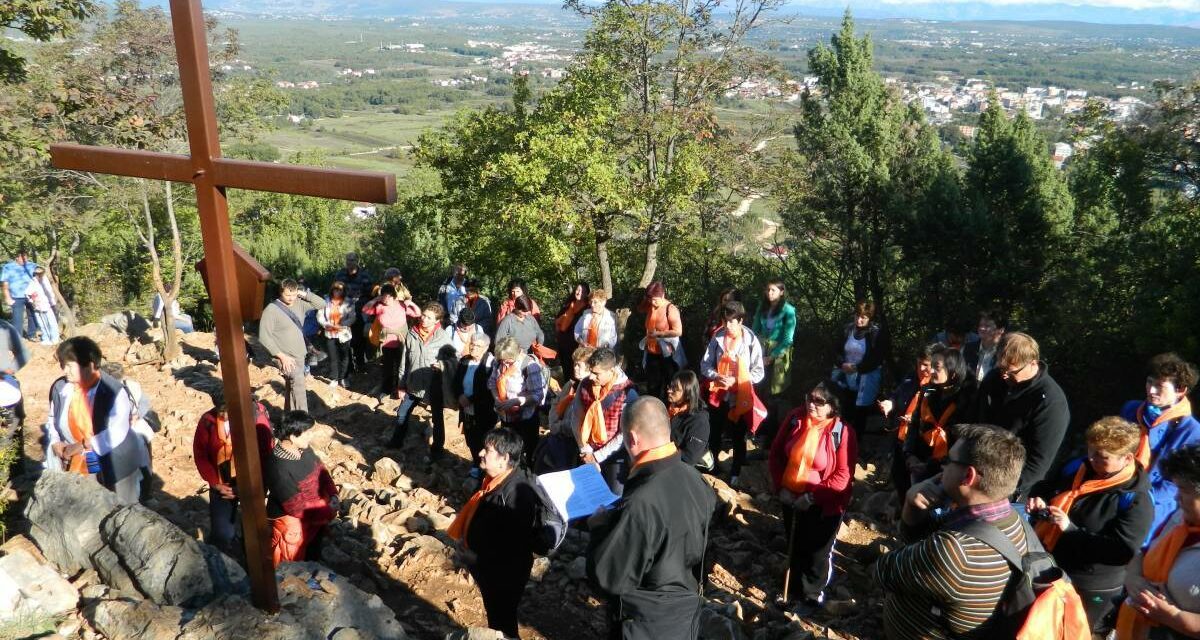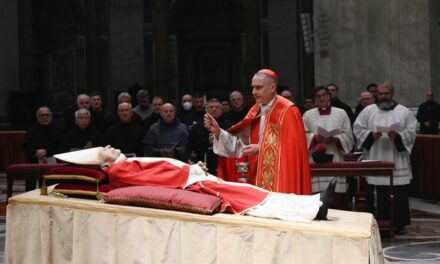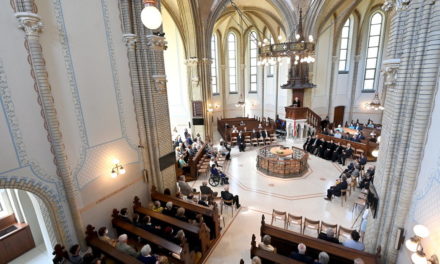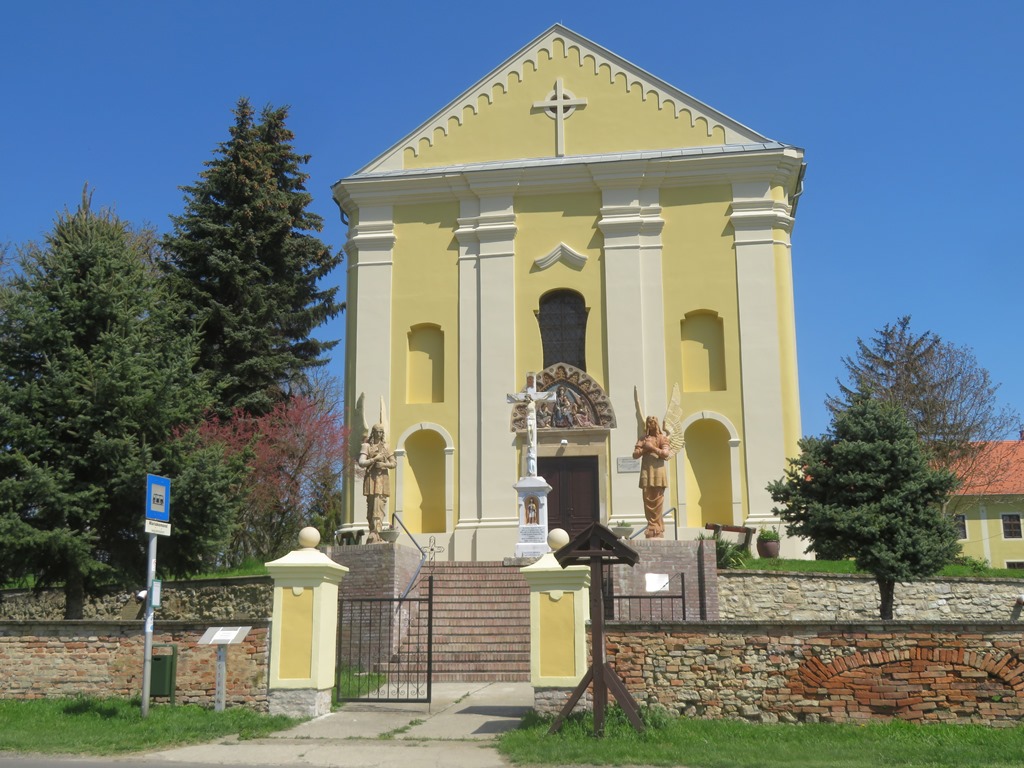Anyone who goes on a pilgrimage to the mountainous region of Medjugorje will find there almost all the nations of the world who long for peace and closeness to God. Mary, the mother of the Redeemer, is the Queen of Peace, she calls people to lead them to the Son of God. Thus, it is not only a Catholic place, but it speaks to all children of God. Ever since Jesus said to John on the cross, "Behold your mother!" to his mother, "Behold, your son!", since then we are all children of the mother of God. And the Hungarians doubly since St. Stephen recommended Hungary to the protection of Mary.
This is the only place in the world where Our Lady has been giving messages for 40 years and always calls for peace, conversion, and prayer. Anyone who was there on the Feast of the Resurrection and the following week could see that the whole world was there in the church and mountains of Medjugorje, in this small village in Bosnia-Herzegovina, which is inhabited mainly by Croats. He could meet Asians, Africans, Indians, and members of European nations, as well as Americans. Confession takes place in at least 30 places, in small booths and outdoors, in almost every language of the world, but mainly in Italian, Spanish, German, English, Slovak, and of course in Croatian and Hungarian in the latter at least 3-4 places. 20-25 priests participate in the daily Holy Mass, it is held in Croatian, but everyone listens in their own language via a small radio. Croatians are very nice to everyone, but especially to Hungarians. "Hungarians go for it!" they greet us with shouts, which is a very happy feeling. But what can we see, feel and experience here in this place of pilgrimage, what is it that draws us here? There are quite a few of us who went back at least 30 years ago.
Peace and a smile, this is on the face of everyone who visits Medjugorje. People smile at each other, colored or white, they politely let each other go, there is no jostling despite the crowd. There is a priest who has to stand in line for two days before we can get in. Although he hardly eats or sleeps, because he is constantly besieged by people, some waiting for a confession, some just for a conversation and a blessing. Such a priest is Father Gábor Kemenes, the parish priest of Nagykovácsi, who has been organizing pilgrimage trips here for about 30 years. Meeting him is also special because he confesses in an unusual way. There are deep silences, waiting for the inspiration of the Holy Spirit, directing attention to God's love and mercy, and in every case a priestly blessing. Among the confessors there are many converted and reborn people, these are the fruits of Medjugorje. So it is no wonder that Pope Francis has already authorized the organization of official trips, although the church investigations have not yet been completed. Because, in all cases, church approval is preceded by long, often decades-long investigations, because the question is always whether these are real heavenly inspirations. We can see that the fruit is peace, conversion, and prayer, this is the official order.
In the church and courtyard of Medjugorje, there is an hour-long rosary every afternoon, followed by Holy Mass, followed by Adoration of the Holy Spirit or intercessory prayers for healing. The church is crowded every day, it is difficult to get inside, but outside there are large spaces with seats and projectors. During this, the confession or conversation with the priests takes place, extending into the evening. In the morning, however, climbing the stone-covered mountains takes place. First, climbing to the place or the mountain of the Apparitions presents the pilgrim with an ordeal. There are those who make the journey barefoot, in fact on the stony terrain without a beaten track. Pilgrims offer this suffering to God or for some purpose, depending on individual life problems, often for the conversion of family members. At the place of the Apparitions, where the Virgin appeared for the first time, the Way of the Cross takes place, as well as on the hill of Krizsovác, which is the next more difficult task. The Stations of the Cross, the stations of Jesus' sufferings, which, according to legend, was founded by the Mother of God. [1] After Jesus' death, he often walked through the area where he carried the cross and where his holy Son was crucified and marked the stations. These stations were always buried by the Jewish Pharisees, who wanted her dead, but Mary recreated them. The apostles of Jesus continued this tradition and thus it remained on top of the world. At Easter, Christians walk this path again, from the judgment of Pilate to the entombment, and it is usually found at all places of pilgrimage. The final destination is the Place of the Apparitions on the smaller hill, where there is a statue of the Virgin when the seer first met the children.
The Way of the Cross on the hill of Krizsovác is a bit more difficult, because it goes up a high mountain, on the top of which there is a huge cross. This cross can be seen from afar throughout Medjugorje. Here, the evil spirit often leaves the pilgrims, often amidst spectacular appearances, accompanied by terrible sounds, as it happened in the week after Easter. But the same phenomenon was experienced during the Adoration of the Blessed Sacrament, a pilgrim fell on his back and lay on the ground for at least 10 minutes, just like during the exorcism in the time of Jesus. Thus it can be seen that the cross found here and the Adoration of the Blessed Sacrament are also of great importance, Jesus is present, not only his mother. The mother always leads to the Son. The Holy of Holies, which is displayed every day, not only symbolizes but also contains the holiness of God. Just like the Ark of the Covenant, which was carried by the Jews, the "chosen people", from which nation the Savior was born. If he touched it without permission, he died, because the holiness of God was present there. With the appearance of Jesus the Savior, this divine sacrament entered the Church in the altar sacrament, it is no coincidence that the ark of the covenant, which previously contained it, was lost. [2] So, not only Catholics can come here, but all God's children. Of course, everyone can go to Catholic churches when there are hours of Adoration of the Blessed Sacrament.
In the garden of the church in Medjugorje, you can see a series of pictures depicting the secrets of the Rosary, which depict the stages of Jesus' life. Christians sing and pray here. Finally, the pilgrim finds a huge statue of the resurrected Christ as he steps out of the crucifix. For a long time now, real human bodily fluids have been dripping from the knees of the resurrected Christ. People drink this with small cloths. It has been scientifically studied for years and contains 99% human body fluid. Thus, at the end of our pilgrimage, Mary leads us to the resurrected Christ.
Finally, the pilgrim travels home after spiritual replenishment, but it is not over yet. At least for the pilgrimage route led by Father Gábor Kemenes. As it starts with Holy Mass, it ends with Holy Mass upon arrival. But even before that, there is spiritual guidance on the bus by the group leaders, who are devout Christians. No one can leave here without paying attention to his fellow travelers and neighbors, and he cannot continue to harbor anger and unforgiveness towards anyone. The pilgrim focuses on who has hurt him in his life, towards whom he harbors anger or resentment, and forgives him, no matter how difficult it may be. As in the prayer that all Christians, regardless of denomination, say: "Our father...forgive us our trespasses, as we also forgive those who trespass against us". No one can enter heaven who harbors anger in his heart, or who has not confessed his sins and asked Jesus for forgiveness.
Can anyone say this is only for Catholics? All Christians should come here, not only Christians, but all God's children.
Author: Katalin Pók
Links:
[1] Katalin Anna Emmerick: The Life of the Blessed Virgin Mary, Szent István Publishing House, 2017.
[2] Katalin Anna Emmerick: The Assault and the Mysteries of the Old and New Testaments, Szent István Publishing House, 2018.
Image: Szekelyhon.ro












